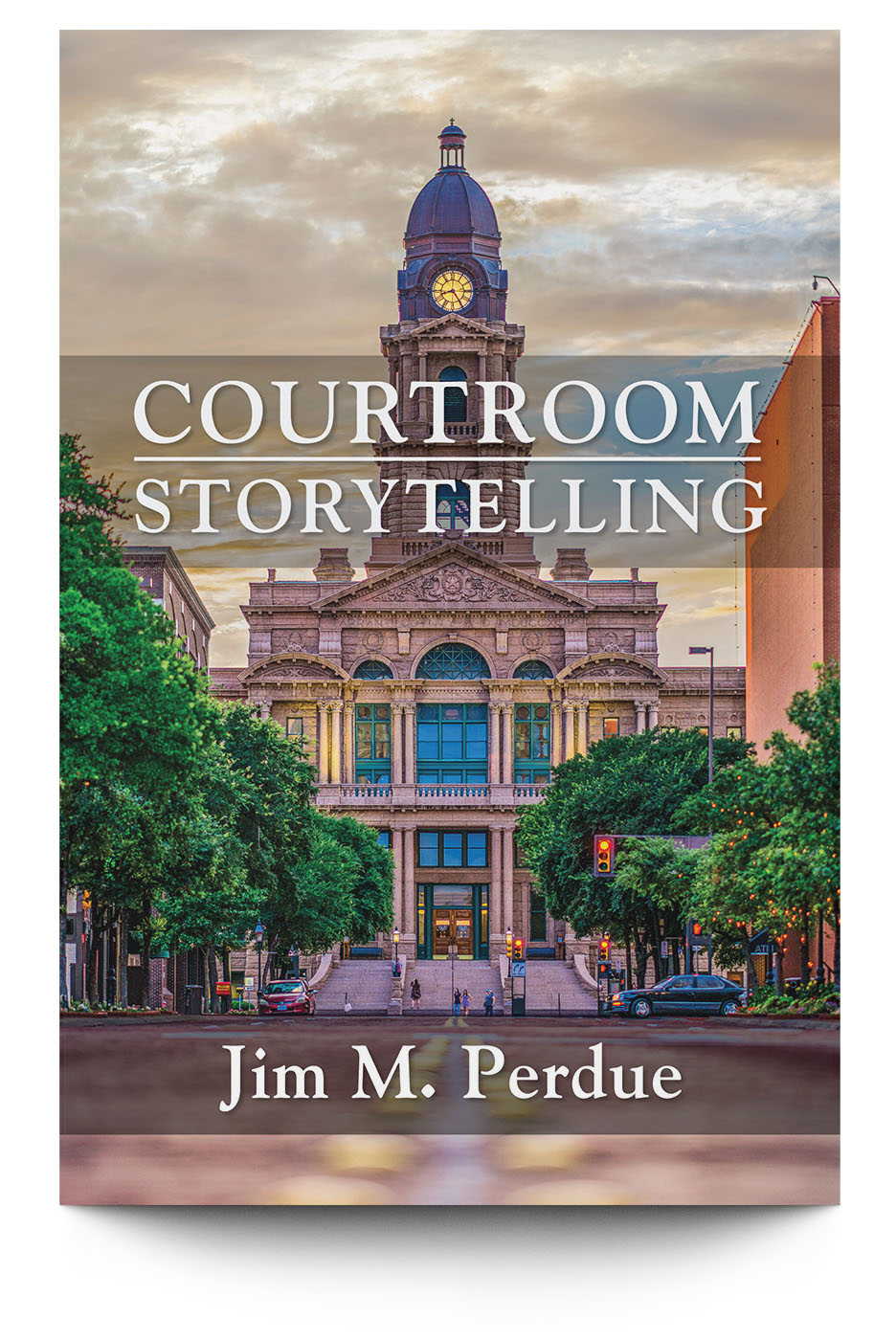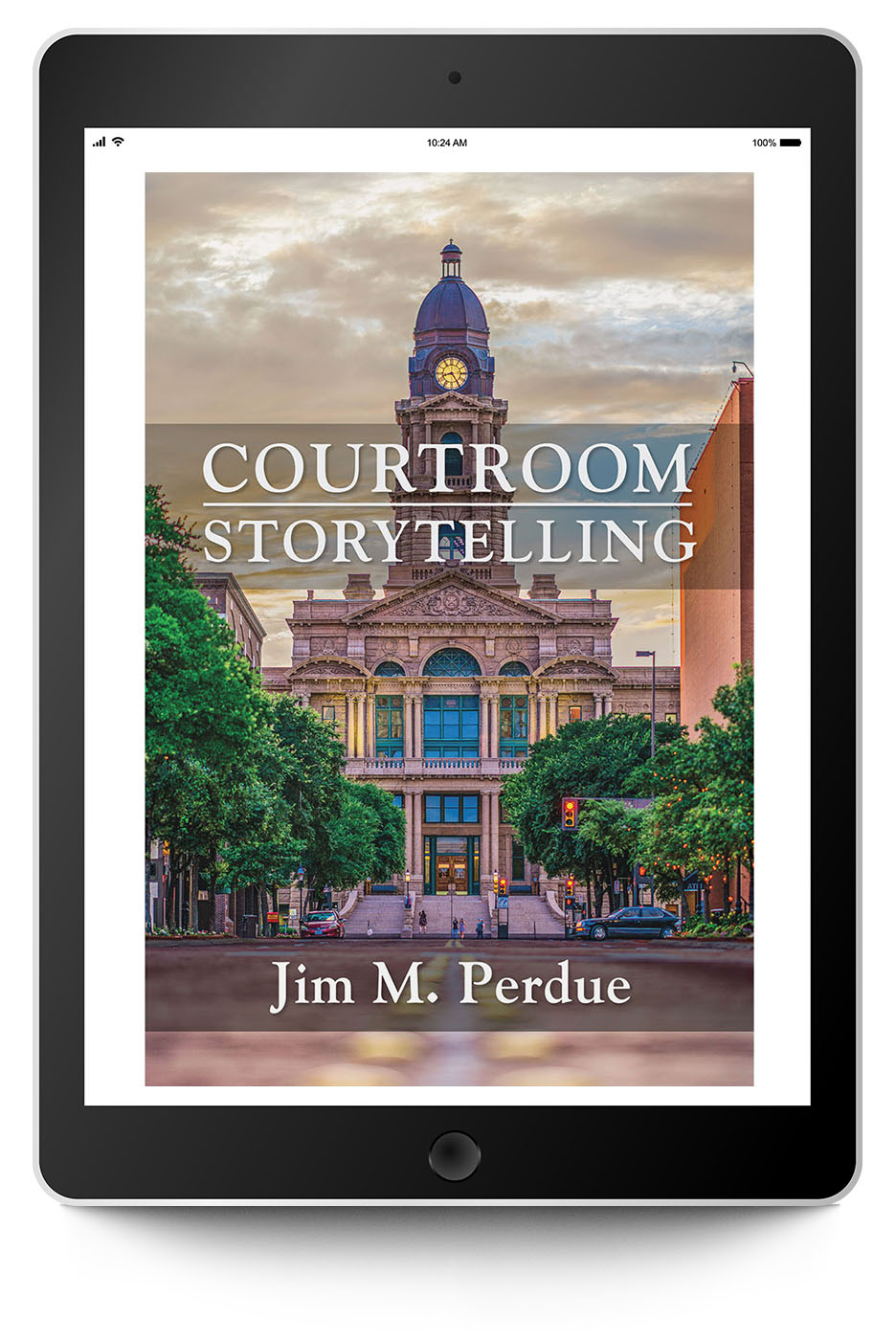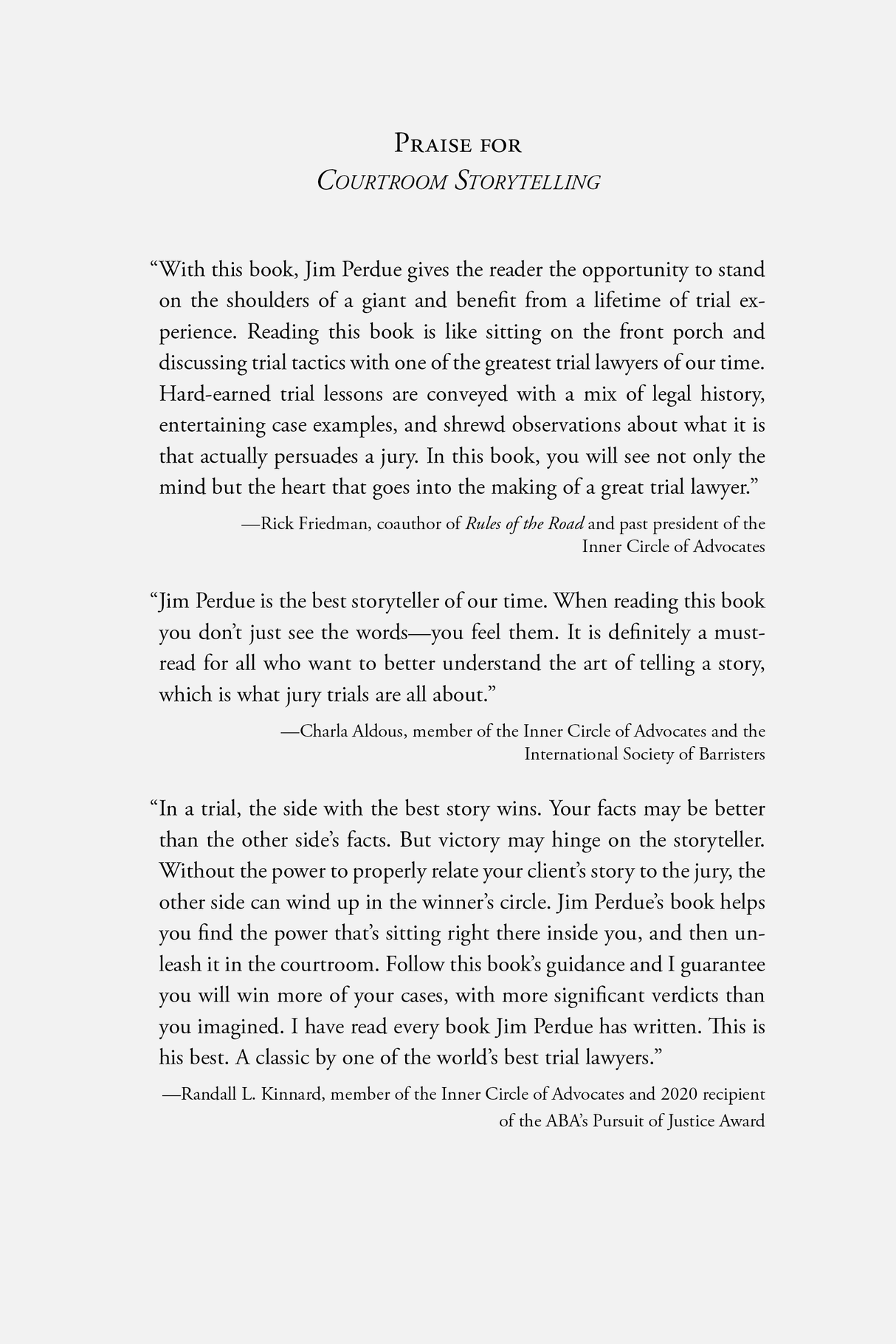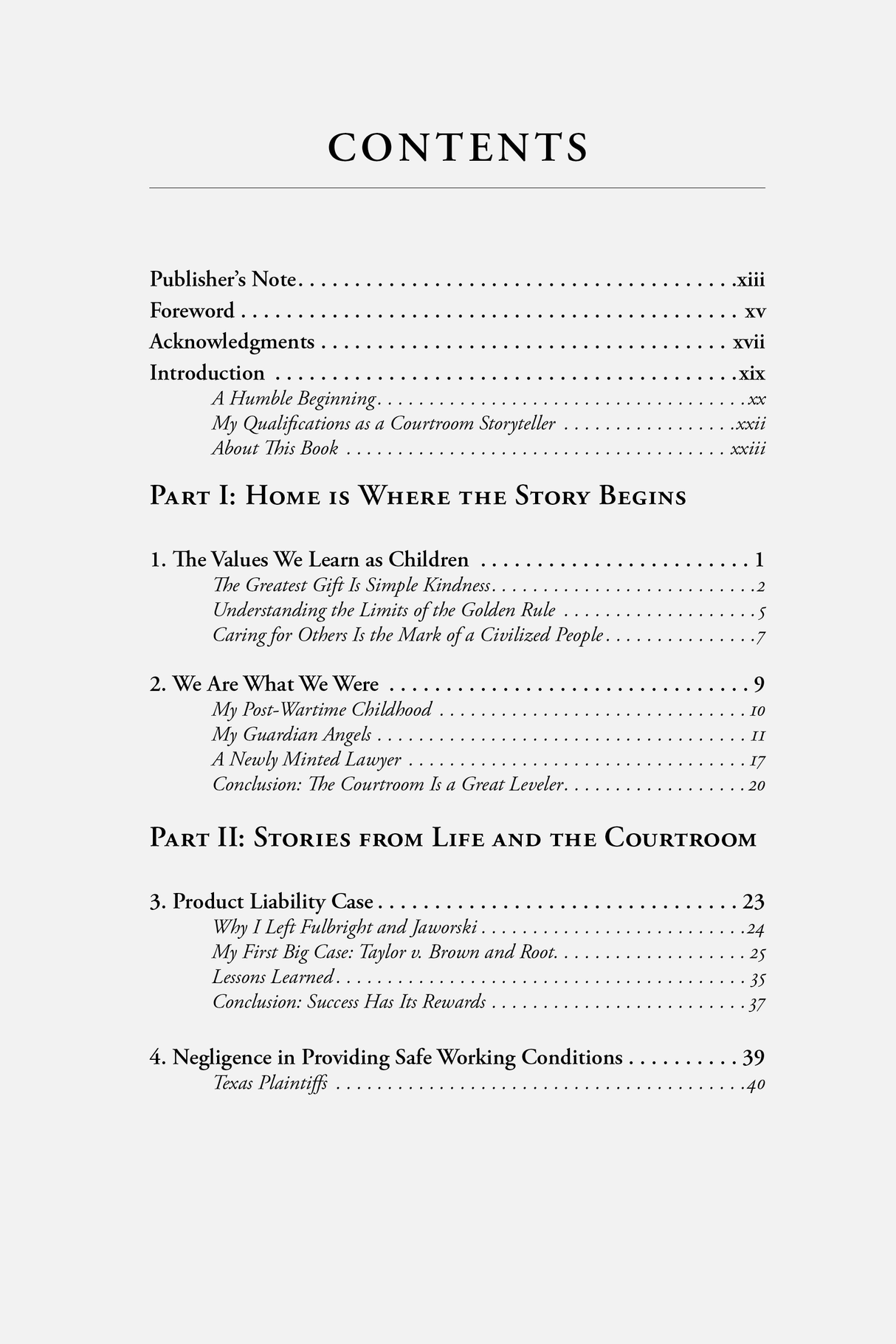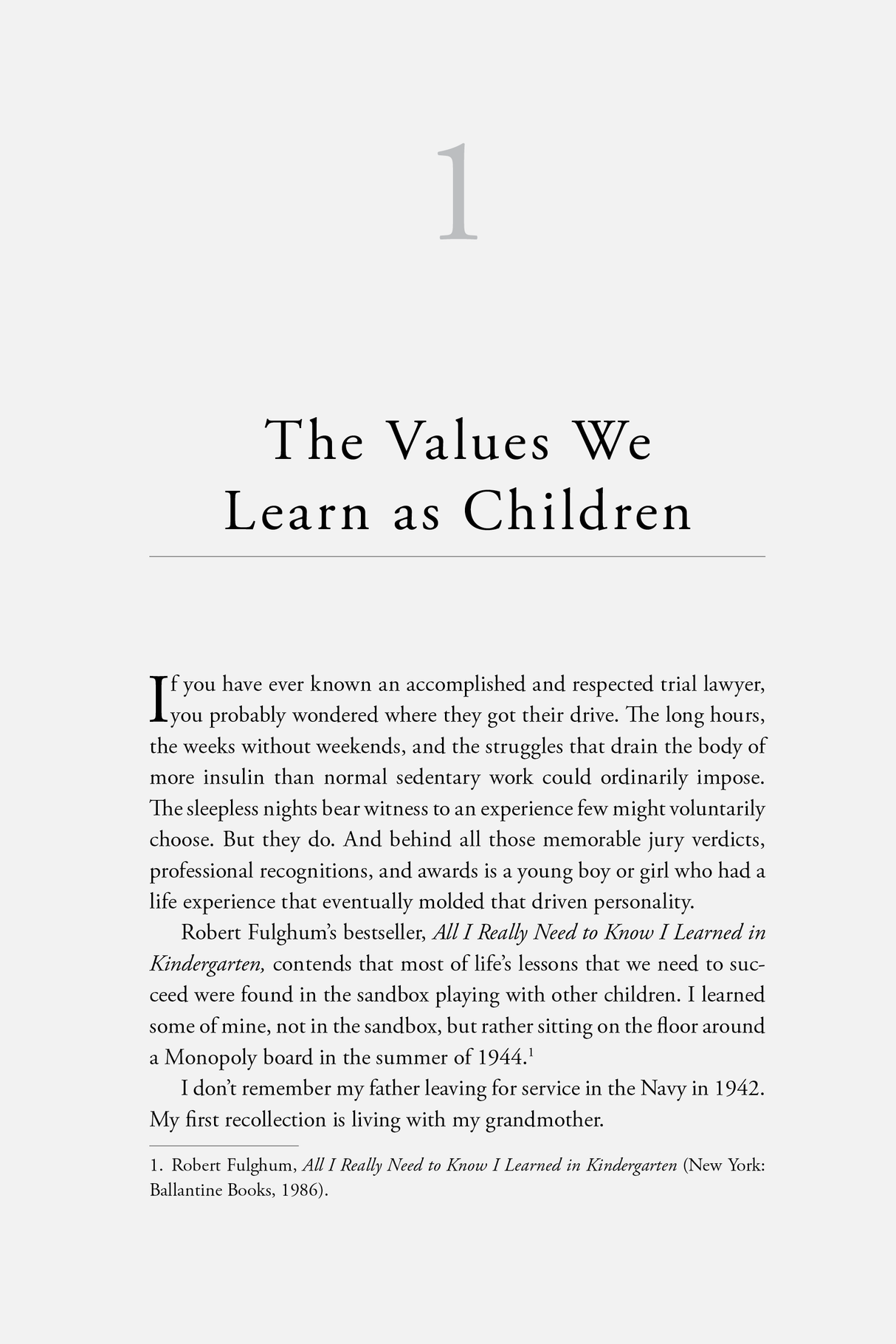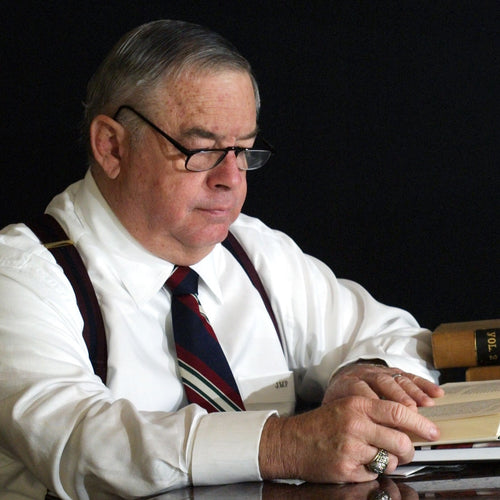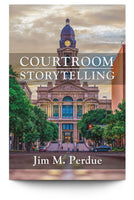Description
Description
The Best Trial Story Wins
Many successful trial lawyers will tell you that those who tell the best story win. Stories hold power. They make case facts memorable and drive jurors to fight for your client during deliberations. A good trial lawyer is a master storyteller. In Courtroom Storytelling, author Jim Perdue teaches you how to become exactly that.
Lessons from a Master Trial Lawyer
Jim Perdue spent over forty years persuading juries to find justice for his clients. He won record- and precedent-setting verdicts, pioneered techniques that are now standard practice among the plaintiff’s bar, and has mentored hundreds of aspiring trial attorneys. In Courtroom Storytelling, Perdue takes many of the concepts he first introduced in his previous books, such as Winning with Stories, and develops them into a polished series of lessons and exercises that you can begin using to immediately improve your next case.
Across twenty-five chapters of practical examples and winning techniques, Perdue guides you through the range of auto, trucking, product liability, nursing home, birth injury, and medical malpractice cases he used to develop and prove his strategies for effectively telling a winning story in court. Perdue breaks his cases down and walks you through each part of trial, jury selection through closing argument, and shows how to deliver an effective case that will stick in the hearts and minds of your jury.
Stories from the Courtroom
Perdue begins with a brief tale of how he began his career as a plaintiff’s lawyer and then dives right into the meat of the book with detailed examinations of what worked and why as he sets out to show you how any lawyer with a just cause and the willingness to “charge hell with a bucket of ice water” can take his methods and apply them to their own practice and win. Offering examples drawn from past opening and closing statements, as well as direct and cross-examinations, Perdue shows how different storytelling techniques strengthen your case and inspire jurors.
Essential Elements for Persuading a Jury
Perdue then moves beyond a nuts and bolts analysis of lessons from past cases to exercises that demonstrate how both new and experienced trial lawyers can improve their ability to present their cases. He discusses how different kinds of evidence often do (and don’t) work in a courtroom and how to adapt them to your trial story. Perdue also provides guidance on word choice, matching the language and analogies you use to the venue of your case, developing an effective speaking voice, the importance of nonverbal communication, and a framework for how to build a powerful trial story that is centered on how your jurors will experience the case.
Don’t let the defense beat you in the battle of impressions before the jury. Learn from a master trial attorney, whom Rick Friedman calls “one of the greatest trial lawyers of our time,” and discover hard-earned lessons, successful trial tactics, and insightful observations about what actually moves a jury to act and deliver justice.
Your eBooks are now accessible from your Trial Guides account! Click here for step by step instructions.
Do you want the eBook and print book? After you complete your purchase of the print book you will receive a coupon code via email to purchase the eBook for $20.
Author
Author
Details
Details
Paperback: 620 pages; 1st Edition (2023); ISBN: 978-1-951962-57-9
Publisher: Trial Guides LLC
Table of Contents
Table of Contents
Publisher’s Note
Foreword
Acknowledgments
Introduction
Part One: Home Is Where the Story Begins
1. The Values We Learn as Children
2. We Are What We Are
Part Two: Stories from Life and the Courtroom
3. Product Liability Case
4. Negligence in Providing Safe Working Conditions
5. Workers’ Compensation Wrongful Death
6. Medical Malpractice in a Rural Hospital
7. Trials Can be Fun
8. Medical Device Product Liability
9. Losses and Appeals
10. Nursing Errors
11. Getting to the Deep Pocket
12. Opening Statements
13. Trucking Wrongful Death
14. Birth Injury
15. Breast Cancer Misdiagnosis
16. Anesthesia Malpractice
Part Three: Essentials of Storytelling for the Classroom
17. My Epiphanies
18. Constructing Your Trial Story
19. Dramatic Techniques for Storytelling
20. Developing Your Speaking Voice
21. Developing Your Nonverbal Communication
22. Words and Word Choice
23. How Jurors Think
24. Evidence
25. Closing Argument
Epilogue
Appendix
About the Author
Free Chapter Sample
Free Chapter Sample
What Legal Leaders Are Saying
— Rick Friedman, coauthor of Rules of the Road and past president of the Inner Circle of Advocates“With this book, Jim Perdue gives the reader the opportunity to stand on the shoulders of a giant and benefit from a lifetime of trial experience. Reading this book is like sitting on the front porch and discussing trial tactics with one of the greatest trial lawyers of our time. Hard-earned trial lessons are conveyed with a mix of legal history, entertaining case examples, and shrewd observations about what it is that actually persuades a jury. In this book, you will see not only the mind but the heart that goes into the making of a great trial lawyer.”
— James Bartimus, past president of the International Society of Barristers and the Missouri Association of Trial Attorneys“Jim Perdue is the Ted Williams of trial lawyers. Superlatives describe his career. He is ranked among the very best ever to have walked into a courtroom. But unlike Williams, Jim has put everything together—his years of learning, experience, and teaching—into this book, Courtroom Storytelling. And the object is not Jim’s success, but to help those who will learn from him to hit something more elusive than a baseball. Justice.”
— Mark D. Clore, member of the American Board of Trial Advocates and board-certified in civil trial advocacy, professional medical negligence, and personal injury trial law“What a magnificent treatise! Jim Perdue’s Courtroom Storytelling is at the pinnacle of the art. Perdue’s stories cover a lifetime of creative and compelling jury arguments in significant cases, a number of which ultimately made or changed Texas law to the betterment of victims state-wide. To say this work is just about storytelling is an understatement. Perdue provides not only unique case insights, but also great context for his stories with an understanding of the times, with the underlying psychology, and with his personal journey and perspectives underpinning them. As someone who tried more than one of these cases to verdict with Jim, I can personally attest to the power of his stories and how they changed many lives as a result. Don’t expect to breeze through this book on-the-fly; it is a work that cannot truly be perceived unless it is perused and processed in a deliberate and thoughtful manner. Take your time with it, savor it, as the stories come to life and the nuances are revealed. If you do, I think you’ll find yourself rewarded with inspiration, growth, and valuable ideas to approach and deliver the stories that your clients deserve.”
— Judy Cook, MD, retired psychiatrist and author of To Die or Not To Die and Skills That Pills Can’t Give You“Jim Perdue's book, Courtroom Storytelling, is one of the most interesting books I have read. Certainly the tale he told of how storytelling helps make it easier for everyone to understand the case was interesting. However, the thing that really made it interesting for me, as a doctor, was the way he discussed medical malpractice lawsuits, because it revealed many things that doctors must be careful and aware of, since not attending to these issues could leave them much more vulnerable in the event they were sued, and possibly leave them more vulnerable to a lawsuit. I would recommend this book to all physicians who are not retired.”
— Todd A. Smith, past president of the American Association for Justice and member of the Inner Circle of AdvocatesWhat treasures you will find in Courtroom Storytelling. No one writes about or tells a story quite like Jim Perdue. I met him over thirty years ago and the only regret is not having had the privilege earlier. It is the rare trial lawyer who combines the wisdom, heart, and generosity of sharing and teaching that Jim has given to all who strive to obtain full justice. For decades, he has shown us the impact of the story and now puts all of his knowledge and understanding into his magnum opus. Don’t miss the opportunity to read and read again from a master.
— Randy Kinnard, member of the Inner Circle of Advocates and 2020 recipient of the ABA’s Pursuit of Justice Award“In a trial, the side with the best story wins. Your facts may be better than the other side’s facts. But victory may hinge on the storyteller. Without the power to properly relate your client’s story to the jury, the other side can wind up in the winner’s circle. Jim Perdue’s book helps you find the power that’s sitting right there inside you, and then unleash it in the courtroom. Follow this book’s guidance and I guarantee you will win more of your cases, with more significant verdicts than you imagined. I have read every book Jim Perdue has written. This is his best. A classic by one of the world’s best trial lawyers.”
— Charla Aldous, member of the Inner Circle of Advocates and the International Society of Barristers“Jim Perdue is the best storyteller of our time. When reading this book you don’t just see the words—you feel them. It is definitely a must-read for all who want to better understand the art of telling a story, which is what jury trials are all about.”
— Steve Yerrid, member of the Inner Circle of Advocates and recipient of the Florida Justice Association’s Perry Nichols Award“Jim Perdue was a legendary Texas trial lawyer for several decades before leaving the courtroom to become a renowned law professor and storyteller. In his latest book, he once again demonstrates he is also a brilliant writer. The memories of cases gone by, the details, the clients, and [the] trials are told in a masterful fashion and with astounding recall. I found the book to be an outstanding source of successful trial tactics, invaluable courtroom lessons, and “people skills” that are critically important guides to winning trials. Rarely found in one text, Jim’s book and how he presents the critical components of success provides a spellbinding read for trial lawyers… as well as people from all walks of life. I found the book to be captivating and full of life lessons learned through experience and told in a superb fashion.”
— Rich Newsome, past president of the Florida Justice Association, recipient of the AAJ’s Steven C. Sharpe Public Service Award, and member of the International Order of Barristers“Jim Perdue’s new book is a gift to the trial lawyer community and a ‘must read’ for young trial lawyers who want to try cases before juries. Throughout the book, Jim teaches methods for telling stories in the courtroom. He uses a lifetime of epic courtroom battles as practical examples for his methods. Unlike many other trial books, Jim weaves his lessons about how to tell stories by telling stories about his own courtroom battles. I am sincerely grateful to him for having written this book; my copy will be dog-eared, highlighted, and used in my own practice for years to come.”
— Mel C. Orchard, member of the Inner Circle of Advocates and former senior faculty member and board member at the Trial Lawyer's College in Wyoming“Jim Perdue remains one of America’s finest storytellers and one of the greatest trial lawyers in a generation. His teaching remains relevant and important despite his long tenure at the top. What I enjoyed the most is that he shares the art of storytelling by telling stories. Jim is funny, irreverent, poignant, sad, hopeful, and extraordinarily wise. This book is a must-read for all who aspire to this calling.”
— James E. Lawrence, executive director of the Blakely Advocacy Institute at the University of Houston Law Center, and director of the A.A. White Dispute Resolution Center“Jim Perdue is a master storyteller. My first exposure to Mr. Perdue as a storyteller was in 1994 at an Advanced Trial Advocacy Workshop at the University of Houston Law Center. I will never forget it. He gave a demonstration on ‘Using Story in Opening Statements’ and it was riveting. This book chronicles his journey, not just as a lawyer, but as a student of human nature, to reach that ‘master storyteller’ status. Courtroom Storytelling has it all… not just the ‘how to,’ but also the ‘why’ and the stories that make this story.”
— James E. Fitzgerald, member of the Inner Circle of Advocates and the International Academy of Trial Lawyers“Jim Perdue doesn’t just tell us how to win at trial. He shows us. This book includes lessons based on actual opening statements, witness examinations, and closing arguments that drive home Jim’s teaching points. Read it and be reminded of the value of hard work, courage, and a good heart. Jim shares his experience and wisdom with lessons for rookies and veteran trial lawyers alike who trudge the road to justice.”
— Paul Luvera, member emeritus of the Inner Circle of Advocates and past president of the Washington State Association for Justice“This is a book with essential information about the role of storytelling skills and their application to trial and offers concrete examples from actual trials including opening statement, cross-examination, and summation. It should be included in every plaintiff’s lawyer’s source of learning.”

